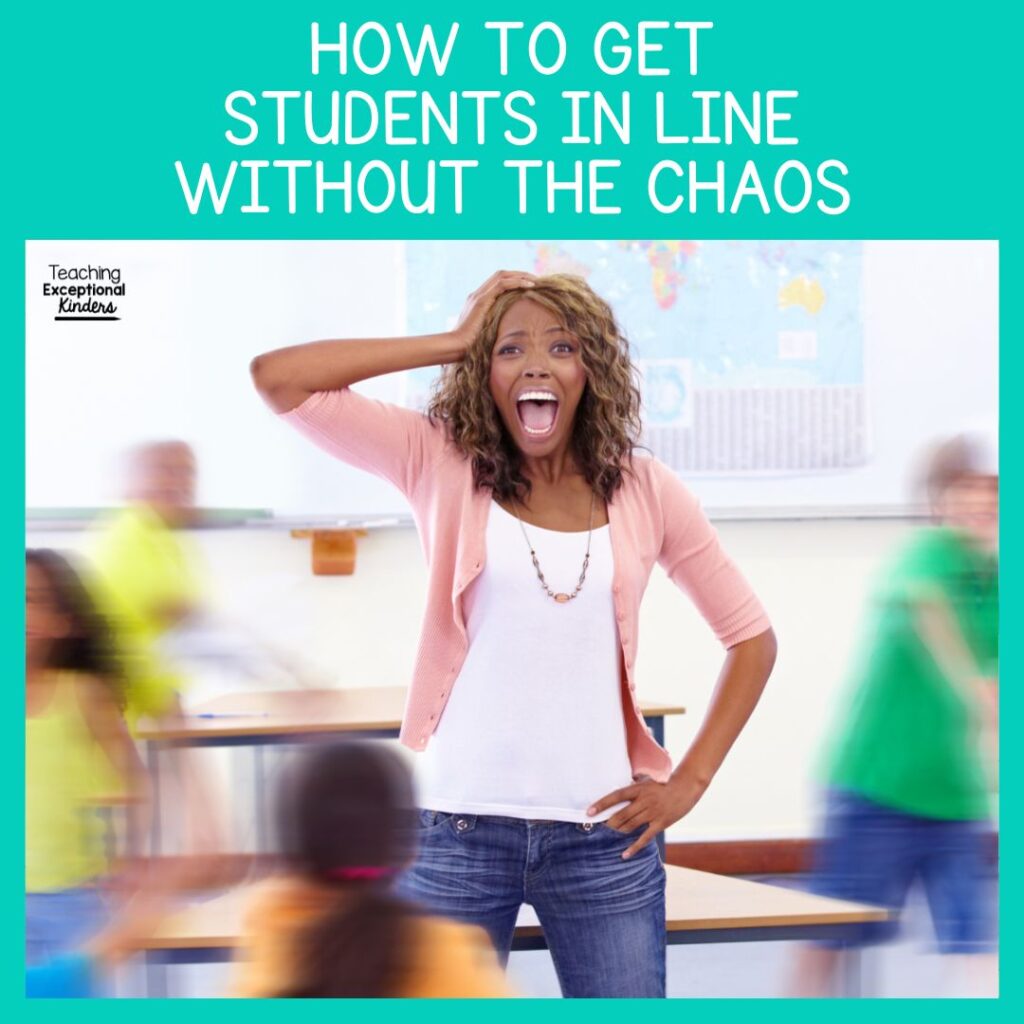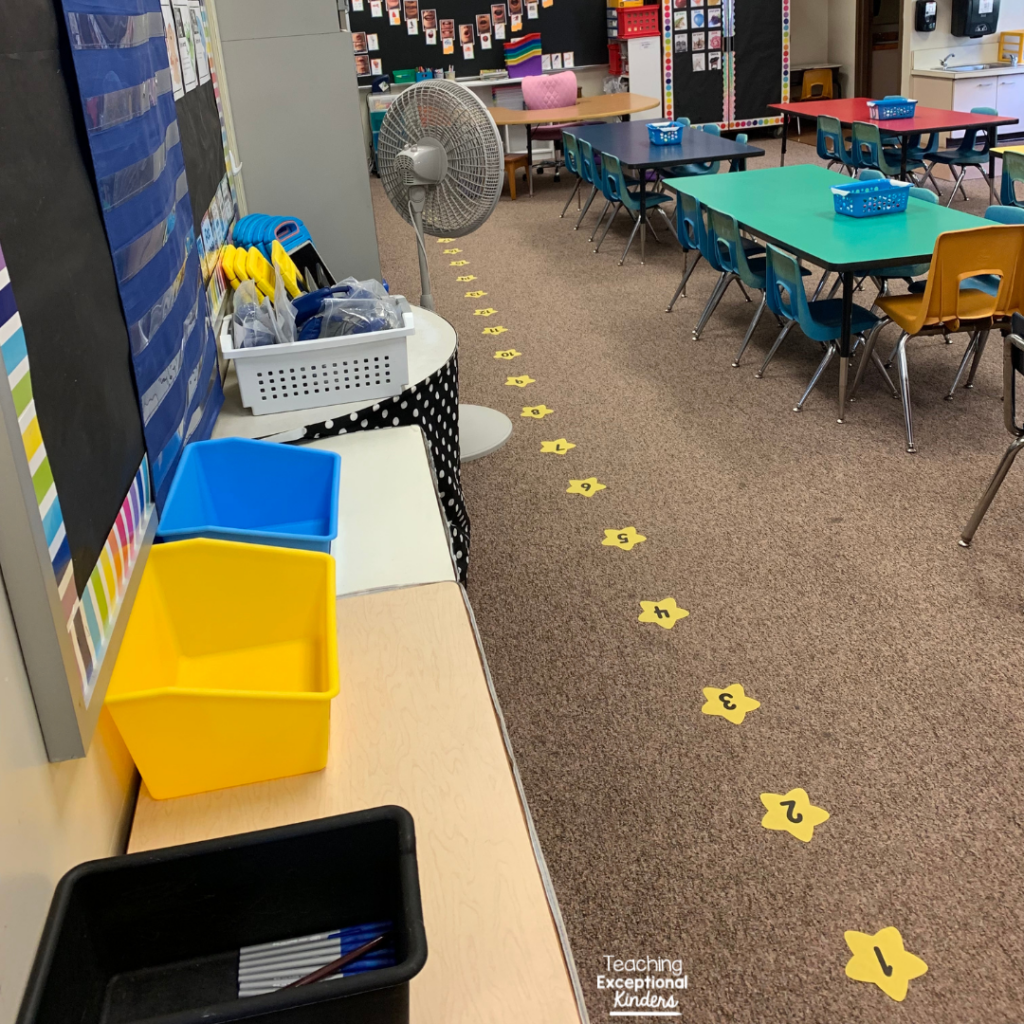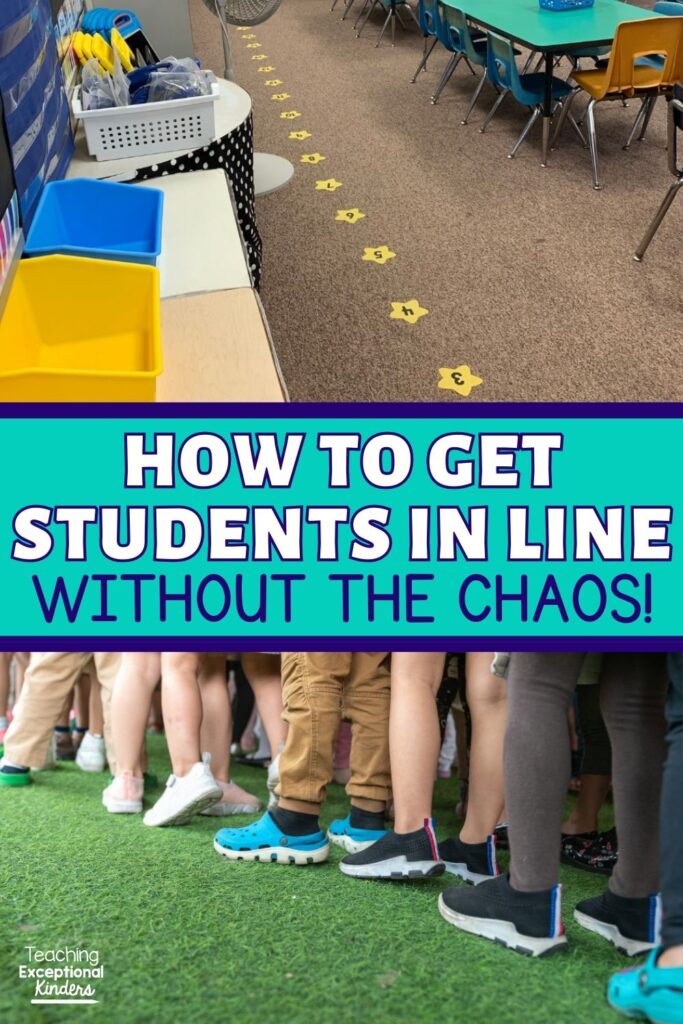How to Get Students In Line without the Chaos!
Does it feel like you’re a referee of a wrestling match every time you try to get your students to line up? It doesn’t have to be so hard to get students in line! In this post, I’m going to share the game changer that finally got my students to line up without the chaos of arguing, whining, and jostling.

How to Get Students In Line Without the Chaos
The tips that I’m going to share come from my own days in kindergarten, when I had my share of lines that looked like total chaos. However, once we set up this system, it was like night and day. Students were able to quickly line up without any whining or arguing.
1. Number Students
The first and most important tip is to give each of your students a number. I like to just go in alphabetical order, giving the first student on the list the number one and so on. These numbers will correspond to where your students will stand in line.
There are often people who complain about this, saying that students are more than a number. This is true! However, being assigned a number is something students will experience their entire lives, from social security numbers to driver's license numbers.
Assigning students a number to help them navigate their day in kindergarten does not mean that you’ll be calling them by a number all day long. In fact, they’re practicing a life skill as they work to remember a number that has been assigned to them.
You might be wondering how students can remember their numbers when they’re still learning how to count and identify numbers. The trick is to use their assigned numbers anywhere you can in the classroom, in the same order. For example, numbering cubbies and mailboxes. Students will start to recognize the people who are next to them in this line of numbers. This will help them determine where their number fits within the group, making it easier to line up when the time comes.

2. Provide a Physical Place to Stand
Once your students have been numbered, it’s time to give them a physical spot to stand. I like to use numbered sit spots on the carpet, but you could use painter’s tape or other numbered labels.
When students are assigned an actual spot with their number, there is no room for arguing about where they are supposed to be standing in line. They’re either on their number or they aren’t.
Does this mean that students will only line up appropriately in the classroom, where they have their spots? Absolutely not! It really doesn’t take long for students to get the hang of the numbers. You’ll find that they easily get into numerical order when lining up after recess or PE.
3. Space Them Out
The next tip for getting students to line up without the chaos is to space out the line-up spots. Young kindergarten students are still developing their gross motor skills, which includes awareness of where their body is in space. It helps to give students plenty of room around their line-up spots so they aren’t crowding the students around them.
For lining up outside of the classroom, it’s helpful to teach the students at the end of the line to stand back. This gives the class plenty of room to fill in without pushing each other.

4. Rotate the Line Leader
For some students, it can be frustrating to always be at the end (or smack dab in the middle) of the line. You can easily address this frustration by rotating the line leader every day!
If you’ve read my blog post about an alternative to classroom jobs, you’ll know that I recommend having a daily classroom helper. One of their jobs for the day is to be the classroom’s line leader. This gives all students the chance to get out of their usual spot every few weeks.
5. Model a Silent Line
The final tip that I want to share is to model a silent line for your students. If you truly want students to know that lining up needs to be a Level 0 process, it’s not helpful to be giving verbal directions throughout the line-up routine. Over time, this just invites your students to talk among themselves.

Some teachers choose to use hand signals with their students when lining up. I’m a huge fan of using classroom visuals. You can print off small visual cues to remind students to be quiet, keep their hands to themselves, and maintain a silent voice level when walking through the hallway. You can keep these visuals on a binder ring on your lanyard or post them near the door in the classroom. Either way, adding visual supports to your line up procedure will help you model what the line should sound like since you can limit your own verbal directions.
Printable Visual Supports for Kindergarten
Visual supports are helpful throughout the school day, not just when you’re teaching students how to line up quietly. I have put together a bundle of visual supports for kindergarten that will help you save your voice and limit how many verbal reminders you’re giving to your students throughout the day!
This bundle include voice level charts, direction cards, visual schedule printables, and more! You’ll be able to incorporate visual supports throughout your daily routine, which will make your classroom run much more smoothly. Just click below to find these printable visual supports in the Teaching Exceptional Kinders shop or on TPT.

More Tips for Lining Up in the Classroom
For even more tips for getting students in line without pushing or whining, check out this video! I walk you through some of my favorite classroom management strategies for lining up.
Save These Tips for Getting Students to Line Up Quietly
Be sure to save this post if you’d like to come back to it later! Just add the pin below to your favorite teaching board on Pinterest. You’ll be able to quickly find these classroom management tips and resources when your students are having trouble lining up appropriately!

Amy
SITE DESIGN BY LAINE SUTHERLAND DESIGNS

